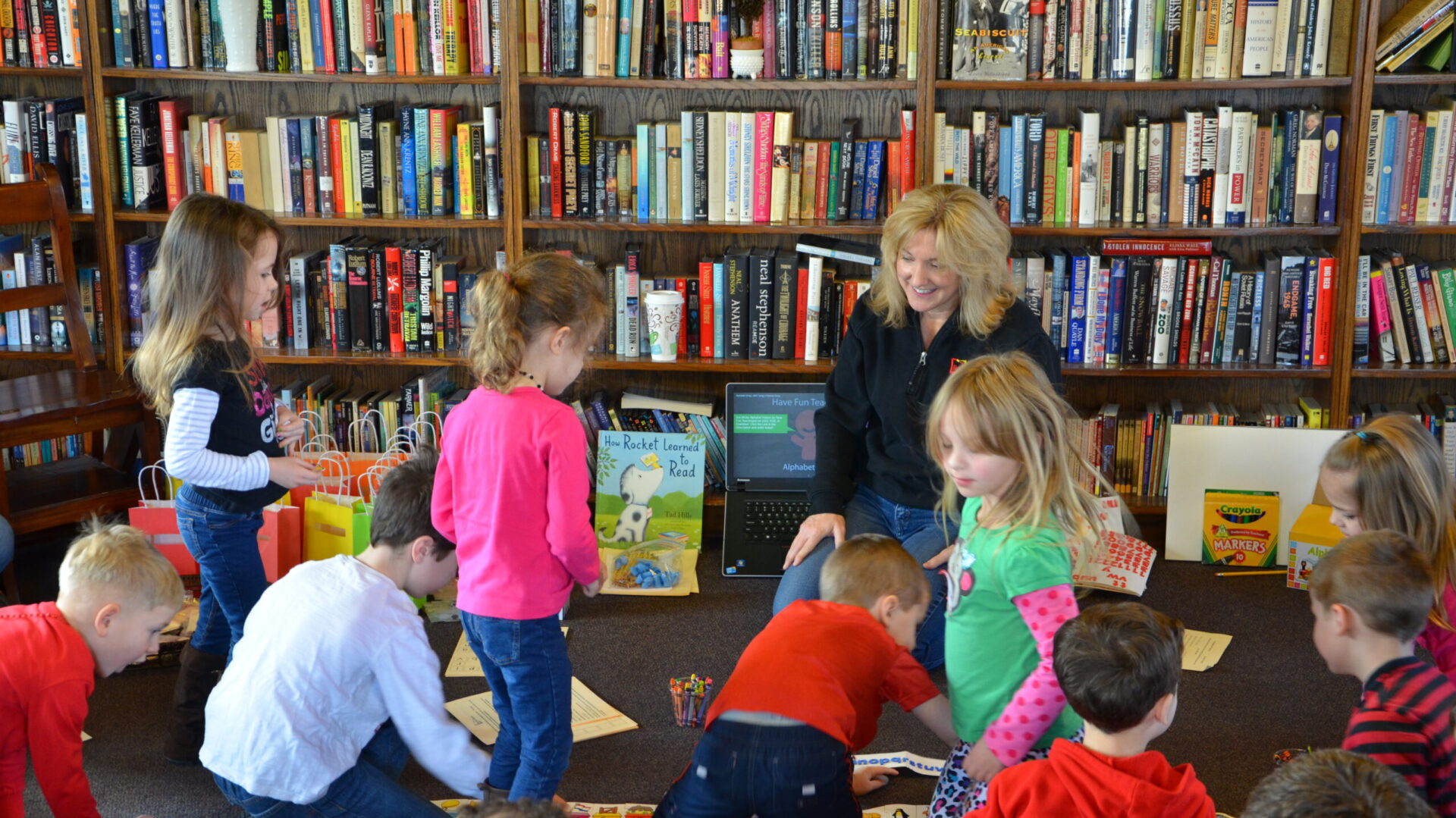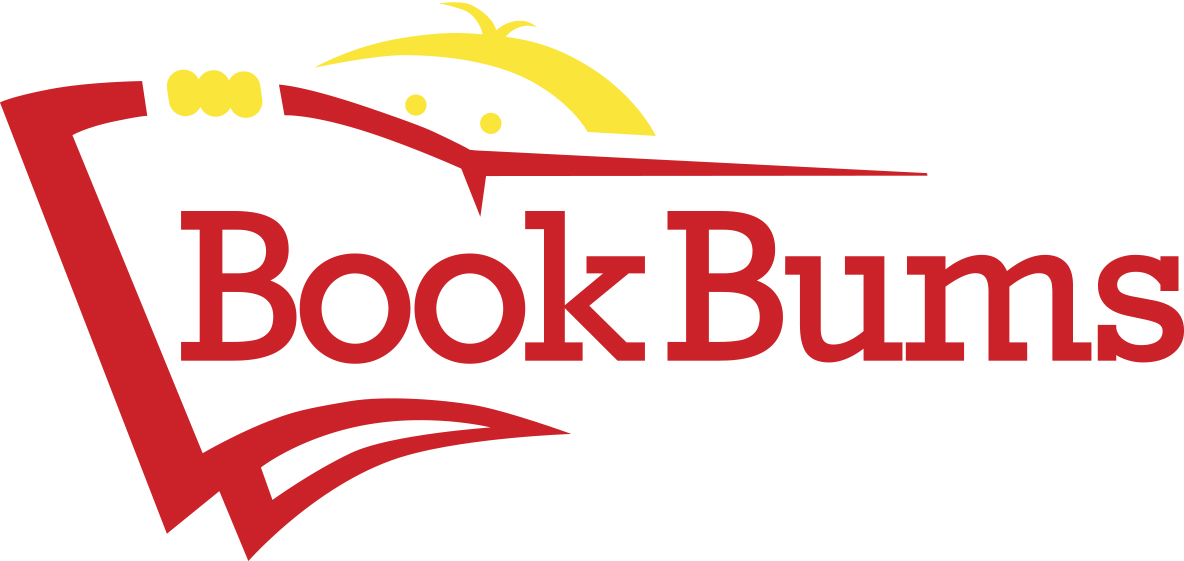
Hello Book Bums families!
Happy autumn! We hope you are staying healthy and enjoying the change of seasons.
This week in the newsletter we are celebrating the coming of fall with book recommendations, science experiments, poetry, and snacks! Dr. Christy also shares tips for spelling and better understanding the sounds in words. Read on and enjoy.
Bookbums.com is an Amazon Associate; We earn from qualifying purchases. This means that if you click on a link to Amazon.com and make a purchase, We may earn a small commission at no extra cost to you. We do recommend the products. Feel free to find them by other means.
Word of the Week
terrarium (tuh-rair-ee-um) noun/person, place, or thing - usually a transparent enclosure for raising plants or small animals indoors
Many classrooms have a terrarium with habitats for turtles or lizards to live in and explore.
*The root terr in terrarium means land or earth.
Literary Calendar
Literary Calendar
• October 1-7, 2023 is Banned Books Week.
• This year's theme is Let Freedom Read!
• Banned Books Week was launched in 1982 by the American Library Association in response to a sudden surge in the number of challenges to books in libraries, bookstores, and schools.
• The week highlights the value of free access to books and information.
• You can learn much more about banned and challenged books at the Banned Books Week website.

From our Bookshelves
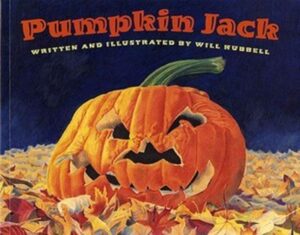
Pumpkin Jack, by Will Hubbell, is a well-crafted book about a boy who’s so entirely enchanted with his jack-o-lantern that he gives it a name--Jack. After lots of candle-lit enjoyment, Mom discovers that Jack is beginning to rot. She asks Tim to take the pumpkin outside to be discarded in the garden. Tim observes the changes in his pumpkin across many months. Eventually, a new “Jack” returns to his devoted friend.
Though this book is about a boy and his jack-o-lantern, it’s also a lesson in the life cycle of a pumpkin. If you’ve never grown a pumpkin of your own, perhaps the time has come. Read on to learn how you can bring the experience of Pumpkin Jack indoors.
Tips for Families

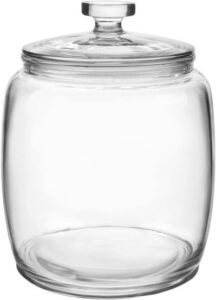

Find your pumpkin locally.
Your family can observe the decomposition and regrowth of a pumpkin with a few basic materials. You’ll need a big bowl with a lid, some soil, and a carved pie pumpkin (because they’re smaller). For this experiment, leave lots of seeds inside your jack-o-lantern.
Place soil in the bottom of your bowl, then add your carved pumpkin and place the lid on the jar. Observe the decomposition of your pumpkin across many months. Because your jar has a lid, you will not need to attend to the pumpkin at all—so no dank smell. Just leave the lid on and marvel at the changes.
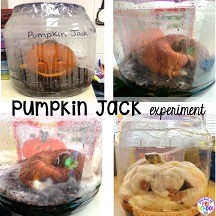
Incredibly, you’ll begin to see some sprouts in early spring. Allow them to grow in your jar for a bit, then remove and separate them to plant outdoors. Your pumpkins can be grown in containers if needed, and you’ll likely have plenty of sprouts to share with friends and family.
You and your children will be captivated (just like Tim in Pumpkin Jack) by the fascinating life cycle of a pumpkin.
TIPS:
No watering needed. The pumpkin will produce its own condensation.
If the seeds don’t sprout, you can add water to the terrarium about 6 weeks before you want to plant the seedlings in your garden.
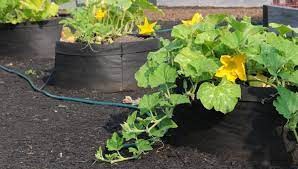
Humans have an inherent connection to plants and other living things, according to what’s known as the biophilia hypothesis, an idea popularized in 1984 by naturalist and writer E.O.Wilson. Since then, more than three decades of research spanning the globe have confirmed the hypothesis and shown that natural environments have a sizable effect on increasing positive emotions and decreasing negative ones.
The Washington Post
Tanmoy Das, June 7, 2022
Let’s examine the roots in the word biophilia. Bio means life or living, phil means love and ia indicates a condition. Biophilia is the condition of loving life and/or living things.
Tips for Readers and Writers
When I train educators, I often present them with a phonemic awareness quiz. It’s an eye-opening experiment that shines light upon the complexities in the sounds that are represented by letters to form words. Try the quiz to see how you fare.
1. Which doesn’t belong?
a) thirst b) thin c) then d) thrill
2. What’s the first sound in Eunice?
3. How many sounds are there in ax?
4. What’s the first sound in quiet?
5. Why do kids often make the short e sound when making the sound for the letter f?
6. How many sounds are in the word queen?
Answers:
1. Which doesn’t belong?
a) thirst b) thin c) then d) thrill
(The t-h represents a different sound.)
2. What’s the first sound in Eunice?
/y/
3. How many sounds are there in ax?
3 /a/+/k/+/s/
4. What’s the first sound in quiet?
/k/
5. Why do kids often make the short e sound when guessing the sound letter f represents?
The sounds in the letter name for f are /e/ + /f/. Kids often overgeneralize and guess the corresponding letter sounds are the first sounds in the letter names.
Note: Some letter sounds are the first sounds in the letter name (b, d, j, k, p, t, v, z), while some letter sounds are the second sound in the letter name (f, l, m, n, r, s). Some letters represent sounds that are not in their names at all (c, g, h, q, w).
6. How many sounds are in the word queen?
4 (/k/+/w/+/ee/+/n/
It’s tricky, isn’t it? Many educators struggle with this task because we were never explicitly taught how it all works.
The aim of this quiz isn’t to make teachers feel small. The aim is to share why so many kids struggle. Many things we now “just know” are extraordinarily challenging for children. We need to explicitly teach kids how words work. To do that well, we need to understand how words work ourselves. “Just knowing” words isn’t enough.
Pause for Poetry
Autumn Fires
By Robert Louis Stevenson
In the other gardens
And all up the vale,
From the autumn bonfires
See the smoke trail!
Pleasant summer over
And all the summer flowers,
The red fire blazes,
The grey smoke towers.
Sing a song of seasons!
Something bright in all!
Flowers in the summer,
Fires in the fall!
Practical Grammar
II am not a great speller. I have some words that just kick me in the can. Here’s one: sauce. Oh, sure. I know it when I see it, but I always waffle between an s and a c for the second to last letter. And restaurant. I always think: Is it restaurant or restaraunt? In both examples, either spelling could work, phonetically, so it’s more than just knowing phonics. Words must be orthographically mapped in our brains so we can recognize when our spellings miss the mark. Do you have a handful of words that you have to think twice about?
Here are fifteen commonly misspelled words and some ways to help us remember the proper spellings:
1. apparent (I see app and parent.)
2. believe (There’s a lie in believe.)
3. entrepreneur (en-tre-pren-eu-r)
4. license (I see lice, not sense.)
5. privilege (Use i twice, then e, and no d.)
6. pronunciation (Write nun, not noun.)
7. separate (The r separates the two a’s.)
8. tendency (It’s not dancy.)
9. prefer (Not perfer, like in perfect.)
10. maintenance (I see main, ten, and /ants/ in maintenance.)
11. recommend (Use only one c. It’s prefix re- added to commend.)
12. occasion (It has two c’s and only one s. We need the i to tell the a to say its name—like a magic e.)
13. occurred (It has two c’s and two r’s. The double r blocks the e from telling the u to say its name.)
14. referred (We need the “blocker r” to keep the e from saying /re-feared/.)
15. acknowledgment (Note the dreadful lack of an e after the g. The Brits left it, but Americans—who didn’t know the e was there to make the g say /j/—ditched it.)
What words can kick you in the can?
Just for Fun
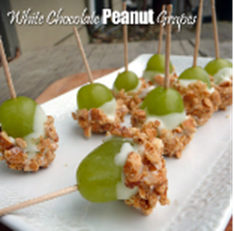
I know. I know. Pumpkin spice is back, but if you’re looking for a fresh and unique fall treat, try these grapes. They’re a bit like caramel apples—fresh fruit dipped into sugary stuff, then dipped into nuts for good measure—but they’re unique and oh so yummy. My sister made these last year, and my family devoured them.
Ingredients:
fresh, crunchy, seedless grapes (red or green)
6 oz. white chocolate or almond bark (in chunks or chips)
1 cup chopped honey roasted peanuts
Directions:
Wash grapes and let dry completely.
Use scissors to cut grapes into sprigs of 2-4 grapes (faster to prepare and easier for serving) or remove all grapes from stems and use toothpicks, one per grape.
Place chopped peanuts in a bowl.
Spread a silicon baking sheet or some waxed paper on counter.
Melt chocolate in microwave, in 30-second intervals, stirring after each round.
Dip grape sprigs into melted white chocolate then dip into chopped peanuts.
Place on prepared surface and allow to set.
Eat these the day you prepare them for best results.
If you know someone who would benefit from our newsletter or tutoring at Book Bums, please share this email with them! Thank you.
Copyright © 2024 Book Bums, All rights reserved
Our mailing address is:
7967 Cincinnati-Dayton Road Suite L
West Chester, OH 45069

